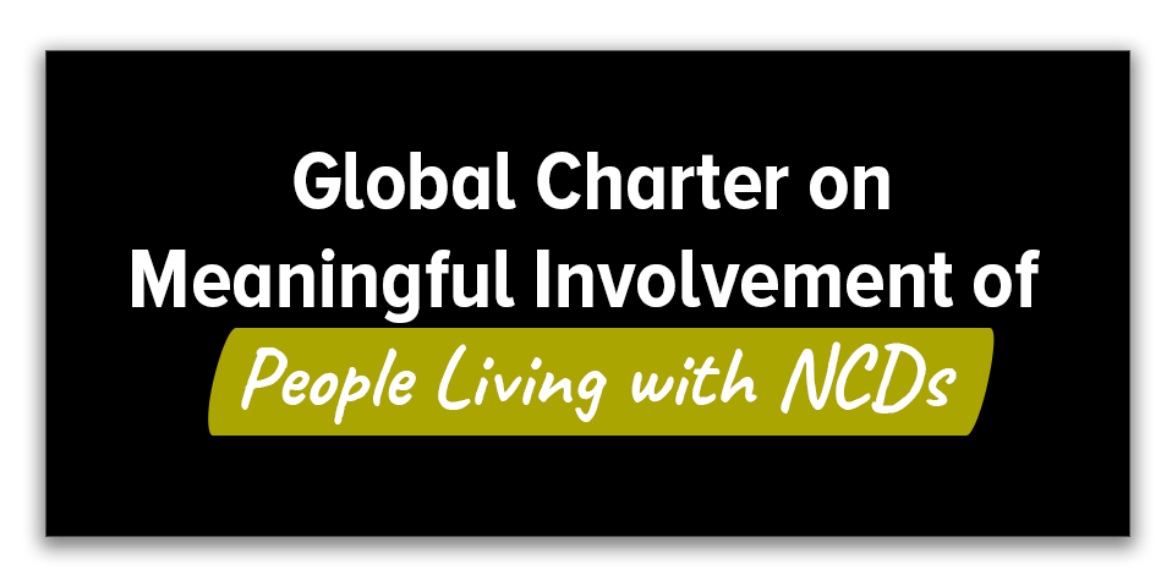Civil society refers to voluntary, non-state, not-for-profit, formal organisations or informal groups formed by people in the social sphere with commonly held values, beliefs and/or causes. Its defining feature is collective action. NCD civil society includes a diverse group of actors, including non-governmental organisations, community groups, informal social movements, constituent-led organisations (those led by and for the people most affected by a health condition), consumer groups, women’s groups, Indigenous groups, youth organisations, faith-based organisations, professional associations, foundations, academia, and think tanks.
World Health Organization. Accelerator discussion frame. Accelerator 3: Community and civil society engagement. 2018.[PDF]
Communities can broadly be described as groups of individuals that share common interests, concerns, or identities. This can be the place where they live, race, ethnicity, age, occupation, a shared interest or affinity or other common bonds, such as experience of living with a disease. Communities can be local, national, or international, with specific or broad interests.
Community engagement is both an outcome and a dynamic process which should result in trust, mobilized resources, and facilitation of sustainable collaborations to achieve better health and well-being outcomes*. It can involve people living with NCDs themselves as well as formal community entities such as civil society organisations.
*Community engagement: a health promotion guide for universal health coverage in the hands of the people. Geneva: World Health Organization; 2020. Licence: CC BY-NC-SA 3.0 IGO.
Noncommunicable diseases (NCDs), also known as chronic diseases, tend to be of long duration and are the result of a combination of genetic, physiological, environmental and behavioural factors. NCDs are the most common causes of death and disability worldwide. Many NCDs are preventable, driven by modifiable risk factors such as tobacco use, unhealthy diet, physical inactivity, harmful use of alcohol and air pollution. WHO defines the five main types of NCD as cancer, cardiovascular disease, chronic respiratory diseases, diabetes, and mental and neurological disorders which make the largest contribution to NCD morbidity and mortality. The NCD agenda also includes a range of other conditions of public health importance that are closely associated with these five, including obesity, renal, gastroenterological, bone and joint conditions (such as osteoporosis and arthritis), oral, eye and ear diseases, metabolic, autoimmune, and inflammatory disorders (such as psoriasis and lupus), and genetic disorders (such as sickle cell disease and haemophilia), as well as injuries and disabilities.
World Health Organization. WHO Global Action Plan for the Prevention and Control of NCD 2013-2020
People Living with NCDs include a broad group of individuals who have or have had one or multiple NCDs as well as care partners. People living with NCDs, play a critical role in building social cohesion and defining a sense of community.
NCD Alliance’s definition of private sector excludes industries involved in alcohol, tobacco, and nicotine, ultra-processed and foods and beverages that are high in fat, sugar and/or salt, fossil fuel extraction, and arms industries, given they are considered as either harmful to health or may increase the risk of noncommunicable diseases. It is important to note that multi-stakeholder interactions can bring great benefits to NCDs as part of a whole of society approach, but also demand a clear understanding of the actual, potential or perceived conflicts of interest that may arise.
United Nations Sustainable Development Goals (SDGs): The 2030 Agenda for Sustainable Development, adopted by all United Nations Member States in 2015, provides a shared blueprint for peace and prosperity for people and the planet. At its heart are the 17 Sustainable Development Goals (SDGs). They recognize that ending poverty and other deprivations must go together with strategies that improve health and education, spur economic growth, reduce inequality and preserve the environment. Good health and wellbeing are essential to sustainable development and is reflected in SDG 3. Global target 3.4 specifically sets out to reduce by one-third pre-mature mortality from NCDs through prevention and treatment and promote mental health and wellbeing.
Community voices that are underrepresented, misrepresented, or have previously been marginalised in policy and programme development include children and youth, women, older people, low-income groups, Indigenous communities, LGBTQ+ (lesbian, gay, bisexual, transgender, queer and other sexual and gender identities), people living with HIV, people living with tuberculosis, people living with disabilities, people living with mental health conditions and psychosocial disabilities, members of minority groups, people in institutional settings, people living in urban slums, rural and remote communities, internally displaced persons and non-nationals, including refugees, asylum seekers and migrants.
Lorem ipsum dolor sit amet, consectetur adipiscing elit. Nullam blandit odio vitae viverra ultrices. Cras at arcu viverra, eleifend tellus eget, mollis augue. Aenean imperdiet luctus sagittis. Donec eget est tellus. Sed sit amet convallis lacus. In accumsan eros felis, at laoreet ex ultricies vel. Curabitur non ex congue, feugiat erat molestie, vestibulum urna. Duis molestie arcu et sem fermentum, pharetra auctor felis fermentum. Ut finibus neque ut dolor scelerisque sodales. Nulla consectetur, eros sed scelerisque imperdiet, orci ipsum auctor odio, vel porta mauris est ac arcu. Sed volutpat leo auctor posuere condimentum. Vivamus tempor turpis eget ante lacinia blandit. Cras eget dolor ac enim pharetra varius.

